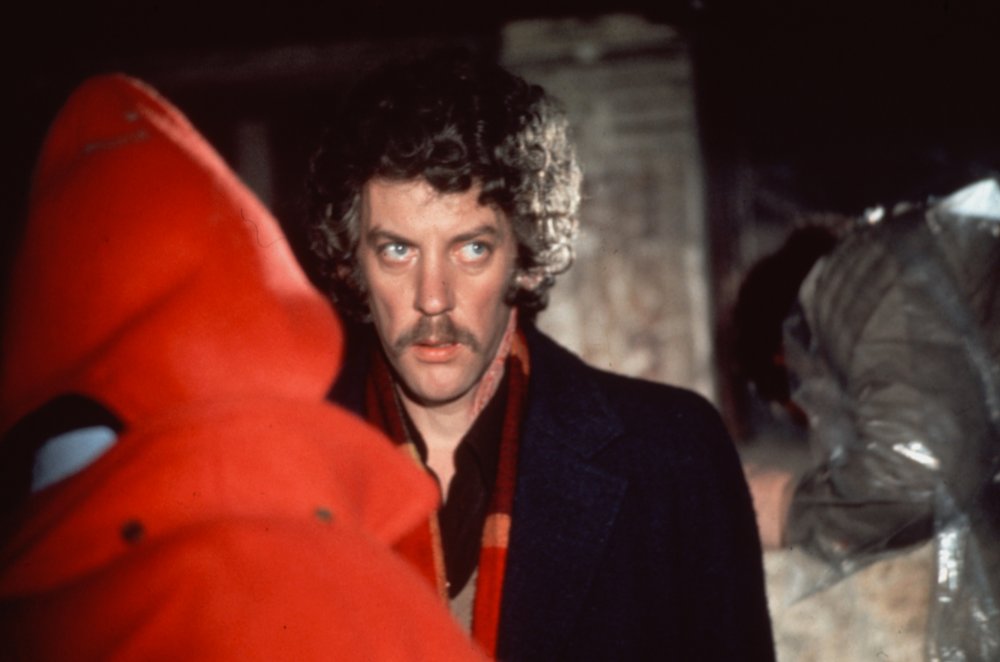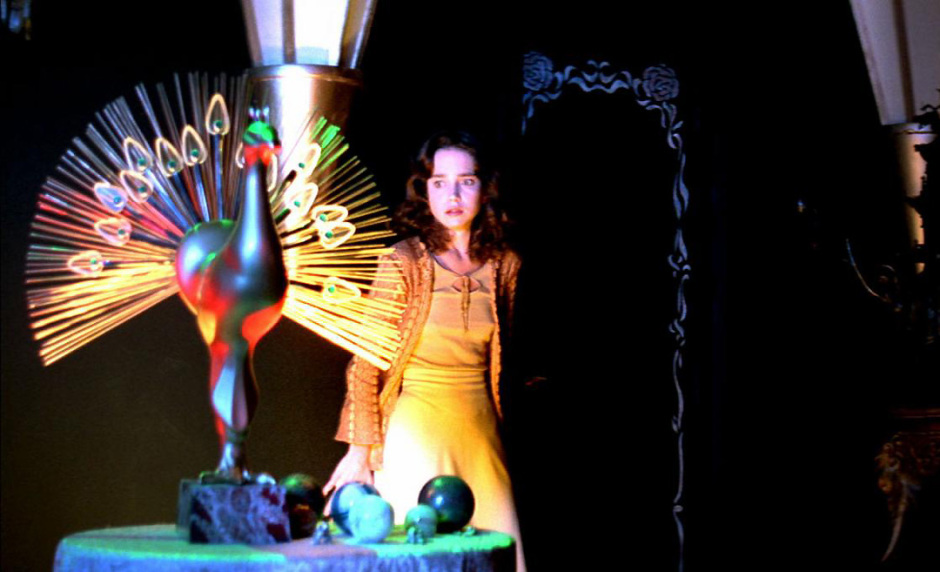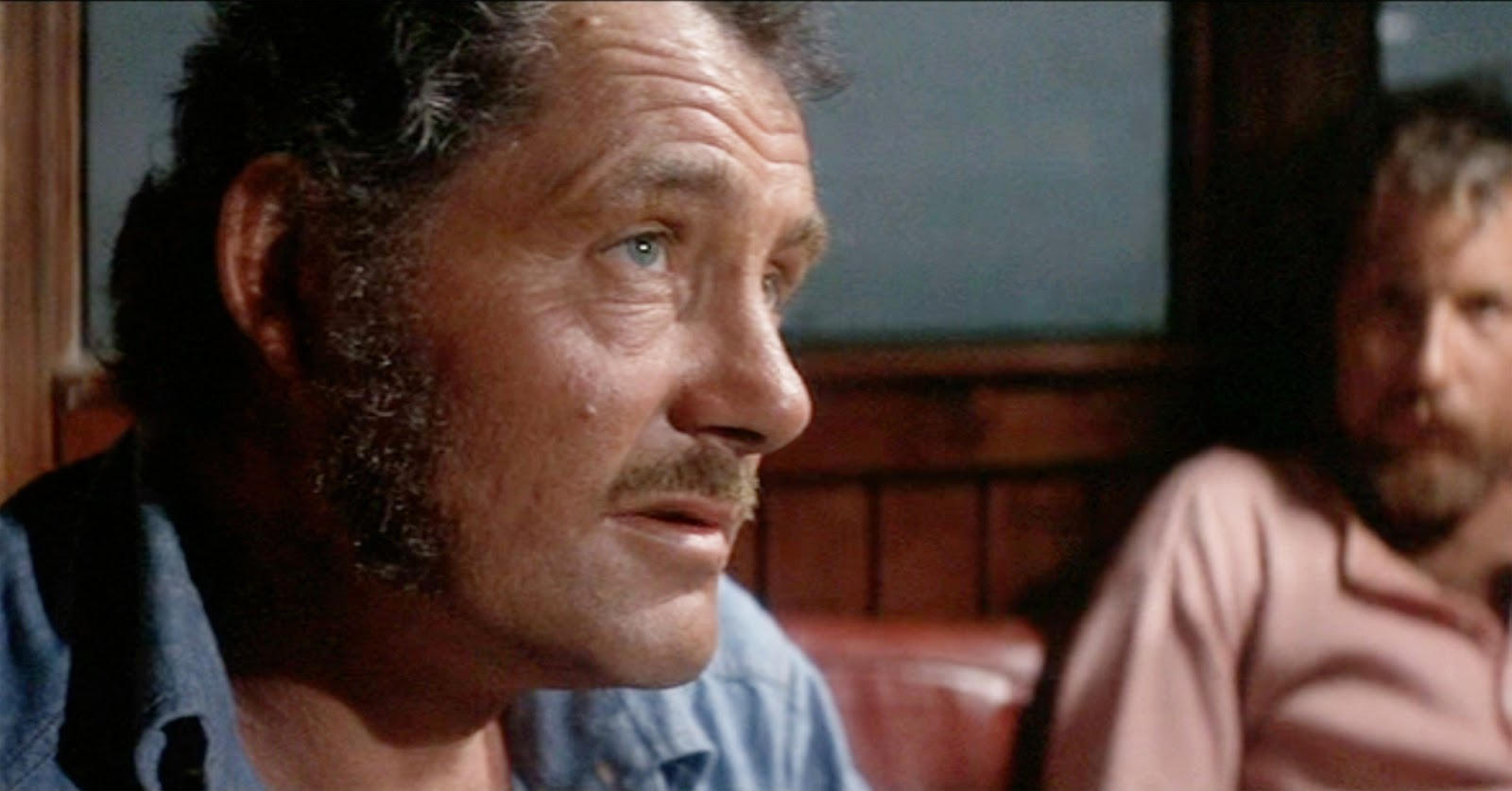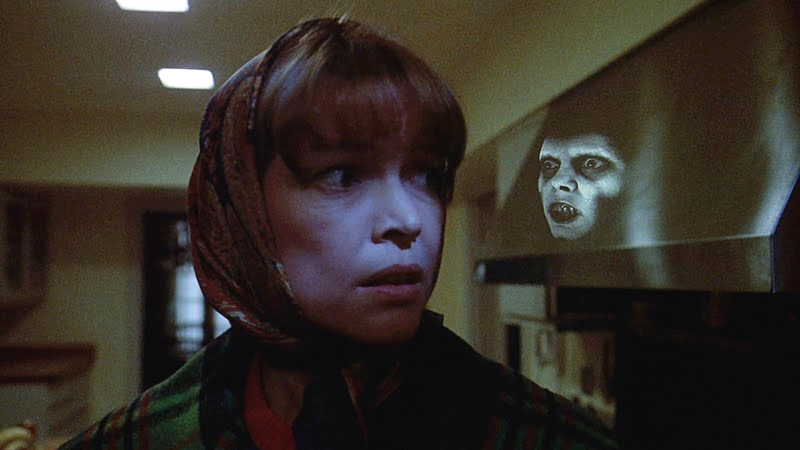5. Don’t Look Now (1973, Nicolas Roeg)

One of the most elegant, gorgeous films ever made also happens to be one of the most influential horror movies in history. The story is told as much through images as through words, and its atmosphere speaks louder than its dialogue. Forever redefining the impact that minimalist storytelling could have on an audience, this dreamlike masterpiece seamlessly merges style with story. Many films have followed in its ghostly footsteps, but few have ever succeeded in creating such a heavy mood with such a light touch.
There’s no doubt that the setting of Don’t Look Now was an invaluable aid to giving the film such a special atmosphere; Venice is a stunning, haunting city, and director Roeg used every winding canal and dark street to full effect. John Baxter makes the coveted journey to Italy on a commission to restore an old Venetian church, and he hopes that the visit will also bring emotional healing to him and his grieving wife. Having recently lost a daughter, they find new peace in Venice; but soon, a mysterious hooded figure that resembles their child starts appearing on empty streets, while two eerie sisters make cryptic psychic predictions about the bereaved family. Meanwhile, a killer stalks the city at night, drawing ever closer to the visiting Americans. Don’t look now (or ever) for a classier horror film – you’re not likely to find one.
4. Suspiria (1977, Dario Argento)

Suspiria seems to contain a perfect mixture of diverse elements that don’t always result in a popular movie – the least bit too much of any of these qualities could ruin a film, but they all blend perfectly in this classic. The bright colors, the overpowering music, the scenes of violence, and the thin plot might sink any other cinematic ship, but they keep Suspiria sailing in style. The continuing ability of Suspiria to overwhelm audiences solely by its atmosphere is a legendary accomplishment which countless films have tried to copy ever since. Perhaps none have ever succeeded as well though, leaving Suspiria as the dazzlingly multi-colored gold standard.
Suzy Bannion just wanted to learn ballet. But when she arrived at a dance academy in Germany, nothing was at it seemed, and her life was thrown into a tailspin. Far from the elegant school which she expected, Suzy discovered a whirlpool of witches, curses, and terror around every corner. Trying to protect her own life while unravelling the mysteries of the school, she risks descending into insanity along the way. The story of Suspiria might seem simple, but it’s undeniably immersive and effective.
3. Jaws (1975, Steven Spielberg)

This early film by Spielberg remains one of his best, and certainly one of his most popular. Made without an astronomical budget and without elaborate special effects, Jaws is nevertheless one of the most effective movies in the horror genre. While setting new standards for the modern blockbuster, Jaws also brought a newfound respect to the oft-ridiculed “creature feature” genre. Its killer musical hook remains a classic, and all monster horror films that follow owe a massive debt to this trailblazing masterpiece.
If you don’t know by now, sharks are what’s on the menu in the landmark film Jaws; and, of course, it’s open season on humans for the duration of the movie. When a swimmer is killed by one of the aquatic assassins, local officials must decide whether or not to close the local beaches. Much to the delight of film fans, they choose to continue welcoming tourists and the money they bring, and a classic movie is born. With just a few musical notes, Jaws still possesses the power to send chills down our collective spine.
2. The Exorcist (1973, William Friedkin)

On paper, this film seems unlikely to appear on a list of popular, influential horror favorites. It contains moments of bizarre blasphemy and twisted terror, and yet viewers who might normally recoil at such things continue coming back for more. For all its controversial religious content, the devout and the doubter alike find something to love; so, while the depictions of demonic possession are obviously exaggerated, The Exorcist clearly taps into some universal themes and fears. Every possession movie which followed owes some debt – directly or indirectly – to this trailblazer, which forever defined how the horror of the demonic would be portrayed on the big screen.
An experienced older priest must face his demons (literally) in this classic shocker. Some adversarial spiritual presence seems to have possessed a young girl, and is determined to ruin both its host and the priest whose destiny might be linked to the demon through an encounter long ago. Though much of the film’s popular appeal comes via its dramatic depictions of demonic possession, the brilliant performances of Max von Sydow, Jason Miller, Ellen Burstyn, and Linda Blair shouldn’t be overlooked. They provide an emotional core to the story which elevate The Exorcist to a higher level of cinema.
1. Halloween (1978, John Carpenter)

Halloween remains a gold standard when it comes to movies featuring a stalking, menacing villain. The famously relentless maniac of this classic is by now a household name that strikes fear in every movie-lover’s heart – Michael Myers. With its super low budget and modest production values, this little sleeper became a bigger success than any independent film which had come before it. Halloween spawned a new breed of slasher films which followed on its heels, and the genre has remained a force to be reckoned with ever since.
At the age of six, young Michael Myers brutally murdered his sister, and was subsequently locked up for the next 15 years. His small hometown of Haddonfield, Illinois has gradually returned to normal over time, but on a fateful Halloween Eve, Michael Myers breaks out of captivity and heads back to his old haunting grounds on a sinister mission. His unsuspecting former neighbors are in for the most terrifying (and perhaps the last) Halloween of their lives.